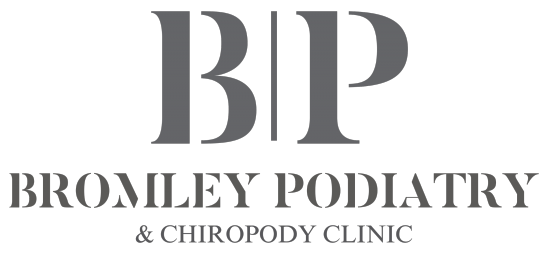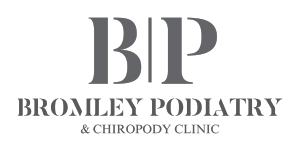OSTEOARTHRITIS AND RHEUMATOID ARTHRITIS OF THE FOOT
About
Certain rheumatological conditions such as rheumatoid arthritis and osteoarthritis can adversely affect your feet, as well as treating the problems with your feet related to these conditions, we are also able to provide you with education and preventative care to ensure your feet are kept as healthy as possible.
What is osteoarthritis?
Osteoarthritis (OA) is often called the ‘wear and tear’ arthritis. It occurs when the cartilage of a joint becomes damaged. When the cartilage wears away, the bone underneath can thicken, causing pain, stiffness and swelling. In the feet the joints most affected are the toe joints especially the big toe joints but it can affect any of the many joints that make up the feet.
In severe cases, the cartilage can deteriorate to the extent that the bones rub together, making it difficult to move the affected joint at all. Symptoms vary from person to person and you may initially feel a toothache-type ache in the affected joint that gets worse when you’re active, wearing high heels or when it’s cold and damp. It may progress to the stage where your feet ache at night. In severe cases, the range of movement in the joint may fail to the extent that you can’t move it at all. If you are worried that you have OA you should see a podiatrist. The earlier you are diagnosed, the more effective any treatment will be.
What causes it?
As our joints are being used continuously through daily movement, wear and tear is inevitable, but for some people the natural repair process does not function properly and causes severe wear and tear (OA).
OA can affect any of the 33 joints in the feet but mostly affects the big toe joints. This joint is more prone to wear and tear from the pressures of walking, especially if you over-pronate (i.e. roll your foot inwards excessively as you walk). Wear and tear at the ends of the bone causes the cartilage to erode and the bone ends may begin to join together. Eventually your big toe may become rigid (a condition known as hallux rigidus), which makes walking difficult, or your big toe may drift towards your other toes (hallux valgus), which can lead to bunions.
Who gets it?
OA is uncommon before the age of 40 and is more common in women than men. Though the exact cause of OA is unknown, it is thought repetitive injuries play a part. When OA occurs in younger people, it is usually because the joint cartilage has been damaged through injury (such as a sprain or fracture), or through overuse of a particular joint through certain occupations such as dancers and athletes. Athritis Research UK estimates that 8 million people in the UK are affected by OA but only 1 million seek treatment.
What can I do to ease the problem myself?
If you do have OA in your feet, there are many things you can do yourself to help ease the condition.
Footwear
Minimise the stress on joints by wearing well-cushioned shoes. Choose shoes with lace-up fastenings or an adjustable strap: they keep the heel in place and stop the toes being pushed to the front of the shoe. Your feet should keep their natural shape when in shoes. There should
be a centimetre between the end of your longest toe and end of the shoe. They should also be roomy enough to accommodate any swelling so a wide, deep pair are best.
Exercise
Toes aren’t a part of the body we often think of exercising but by doing so and stretching regularly, you can help nourish the joint cartilage and strengthen the muscles and tendons around the joint.
It is recommended that you put your feet side by side (say while you are in the bath) and try to move your big toes towards each other and do this regularly three or four times a day. Yoga is a great exercise for all your joints, including your toes. Swimming is also great because it doesn’t put any pressure on your joints.
When should I see a podiatrist?
Although there is no known cure for OA, there are many ways your podiatrist can help you ease the pressure on the affected joints and therefore reduce the pain and inconvenience.
Orthoses are special shoe inserts that help redistribute the pressure as you walk. They’ll help you walk in such a way that alleviates the pain in your joints.
Your podiatrist can also advise you on the best type of footwear to wear for your exact problem. You may be recommended a shoe with a stiff sole as this relieves pain by reducing the movement of the joints.
Strapping the feet for a short time to limit joint movement may also help. We can advise you on how to do this so you can repeat at home.
If your problem doesn’t improve with the above measures, you may be referred to a podiatric surgeon (specialist foot surgeon) who will evaluate the extent of your problem and see if you are suitable for :
■ Excisional arthroplasty (replacement of joint surfaces)
■ Interpositional arthroplasty (placing soft tissue, especially joint capsule, between the resected bone surfaces)
■ Osteotomy (decompresses and realigning the joint surfaces)
■ Joint replacement (used for irreversibly damaged joints)
■ Arthrodesis (where the bones are fused together)
However, surgery should only be used as a last resort.
What is rheumatoid arthritis?
Rheumatoid arthritis (RA) is a condition that causes inflammation in many joints of the body and in the lower limb it particularly affects the feet, ankles and knees – and tends to occur symmetrically. For example, if your right big toe is swollen and painful, chances are your left big toe will be too. In addition, as well as joint pain and stiffness, symptoms include muscle aches, anaemia (a low blood count leaving you feeling tired), and fever. The stiffness tends to be worse in the morning and after rest.
What causes it?
Unlike osteoarthritis, which is caused by wear and tear, RA is a chronic inflammatory disease where a faulty immune system attacks the tissue that lines and cushions the joints, leaving them swollen, painful and stiff. RA tends to affect the smaller joints such as the fingers and toes first, so feet are often one of the first places to be affected. Symptoms typically affect the toes first. The joints may become swollen and even freeze in one position so they can’t extend fully. This can lead to hammer toes and bunions deformity which can then cause rubbing from the shoes resulting in corns and calluses.
If the joints in the middle of the foot are affected, the arch can collapse, leading to a flatfoot deformity. The fatty pads on the balls of the feet may slip forward, causing pain on the balls of the feet. If this happens, it can feel as if you are walking on pebbles. Any kind of foot deformity will cause an uneven distribution of pressure as you walk, making you more likely to develop corns, callus and ulcers. You may also develop a bony spur & rheumatoid nodules – fleshy bumps that usually occur over bony areas such as the heels and occur in 30% to 40% of people with rheumatoid arthritis leading to heel pain.
When should I see a podiatrist?
There are many things a podiatrist can do to make walking less painful.
Orthoses
These are a special type of insole that can be fitted into your shoes. They will help you walk in such a way to minimise the pressure on your affected joints.
Shoes
As well as a moulded insole, we can help you find shoes that are roomy enough to accommodate your foot – and orthoses – without adding unnecessary pressure. If your toes are beginning to stiffen or curl, for example, it’s important for you to wear a shoe with an extra deep toe box.
Any secondary problems such as ulcers and corns that have been caused by foot deformities can also be treated.
Bromley Podiatry & Chiropody serves the following locations: Bromley, Pettswood, Chislehurst, Orpington, Beckenham, Shortland, Hayes, Sundridge & Grove Park. Please see our contact page for directions and contact details
Book your appointment now online or call 0208 313 3133
MAKE AN ENQUIRY BY CALLING
0208 313 3133
Alternatively you can book your appointment with us online today!
Initial consultations and treatments start from £71






